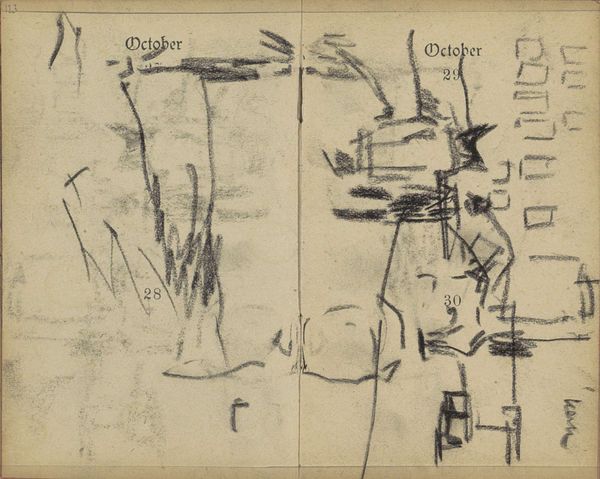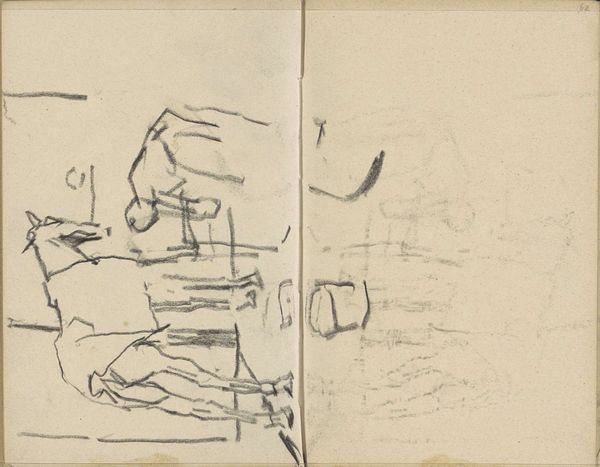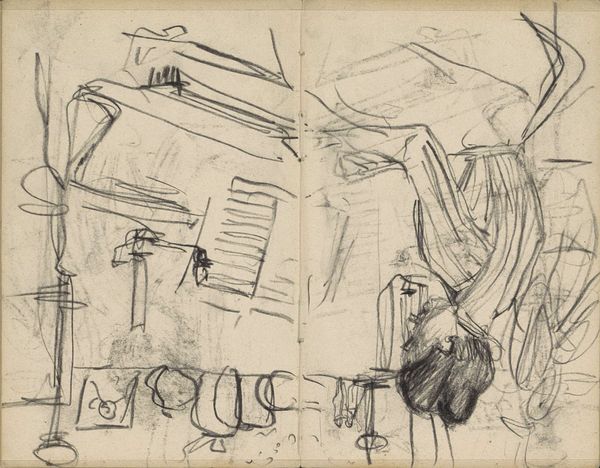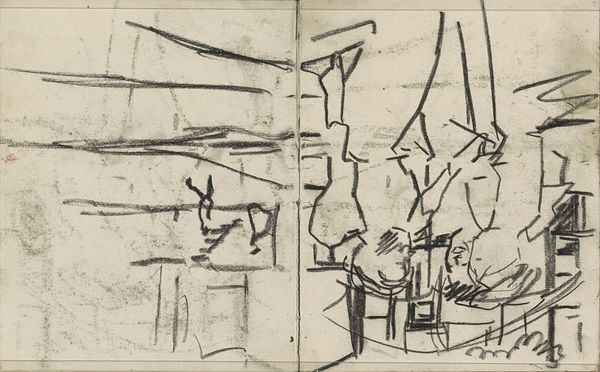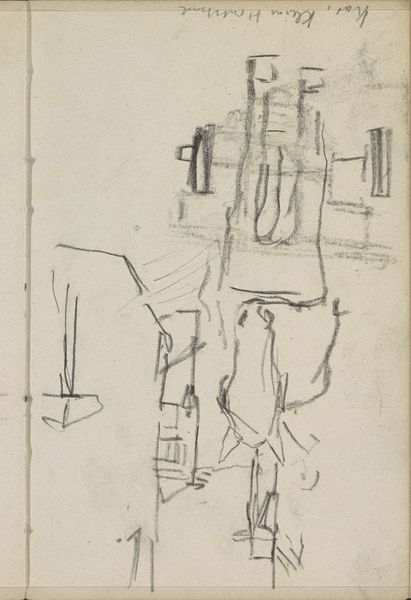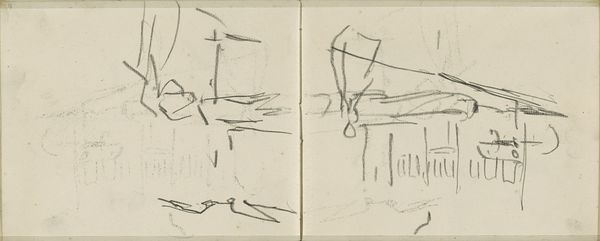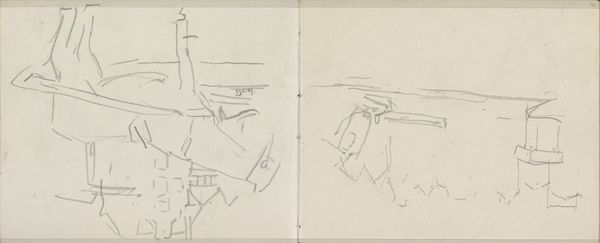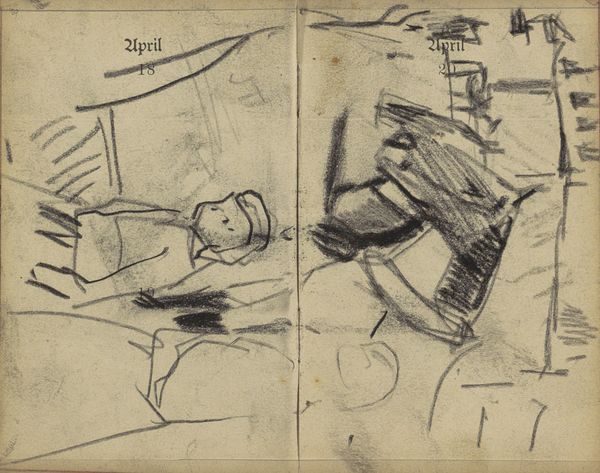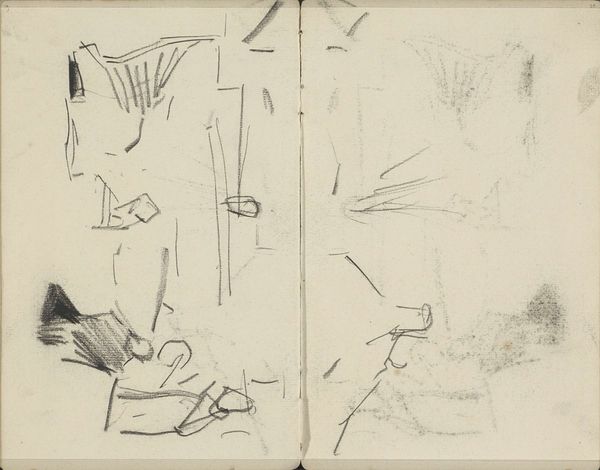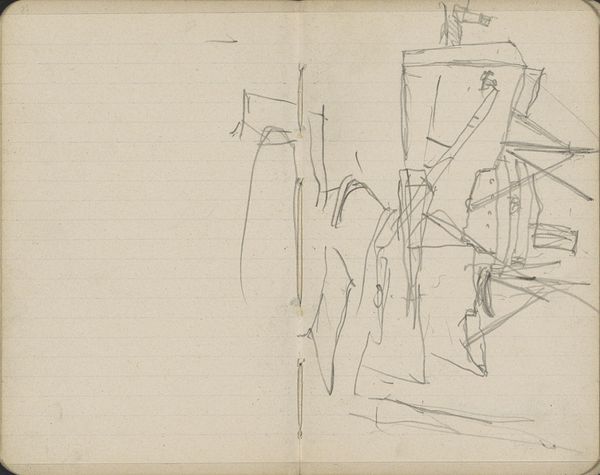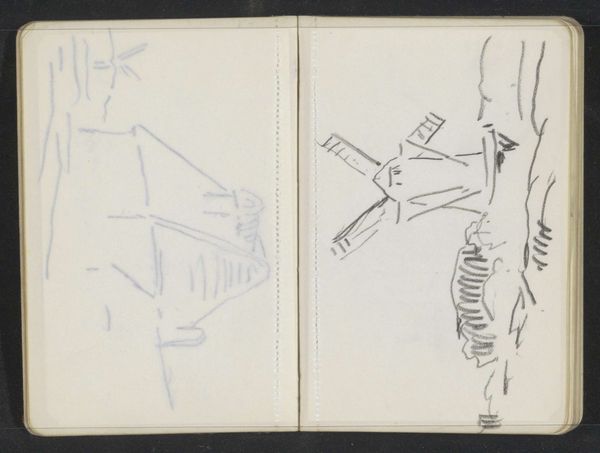
Copyright: Rijks Museum: Open Domain
Editor: This drawing, "Twee aangespannen paarden" or "Two harnessed horses," created by George Hendrik Breitner in 1893, appears to be a study done with graphite, charcoal, and pencil on paper. The sketches seem raw, unfinished even, but there is an incredible sense of movement captured in the composition. What do you see in this piece? Curator: Breitner, deeply embedded in the social realities of his time, uses Impressionistic sketches like these to document the rapidly changing urban landscape of Amsterdam. Notice how these quick, almost journalistic renderings, depart from traditional equestrian portraiture. Instead, he gives us a snapshot of working horses, deeply enmeshed in the commerce of a bustling city. How do you think the rising industrialization of the time influenced the perception of working animals like these? Editor: Well, it makes me consider how these animals were seen more as machinery, part of this larger industrial movement... almost anonymous within it. The quick sketches emphasize the practical use of these animals rather than their inherent beauty. Curator: Exactly! The art world began shifting its focus towards representations of the working class and everyday life in urban environments. Breitner’s choice of subject and medium reflected his socio-political inclinations and his desire to capture fleeting moments of contemporary urban life in Amsterdam. Did the location of this work at the Rijksmuseum impact how you feel about the artwork itself? Editor: Absolutely, considering where it’s housed offers a bit of gravitas that the sketch alone might not have. Seeing something so informal within a national collection encourages me to think about whose stories are considered important and preserved. Curator: Indeed! It prompts a discussion about the value of spontaneity, realism, and social commentary within our institutional understanding of art history. Editor: I never would have thought of the social context of the time affecting art like this, it definitely shifts how I view Breitner's intentions with his drawings! Curator: Examining historical artworks, while reflecting on modern context, help us appreciate its complexities.
Comments
No comments
Be the first to comment and join the conversation on the ultimate creative platform.
